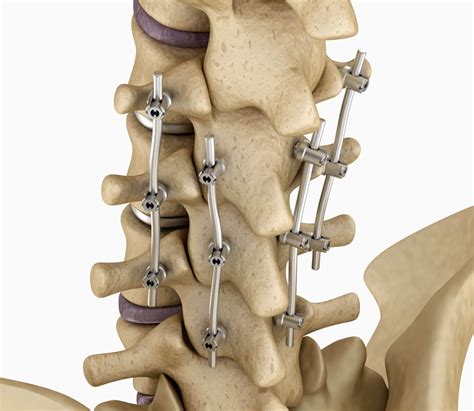Intro
Discover Spinal Fusion Surgery, a procedure relieving back pain through vertebrae fusion, using rods and screws, to stabilize the spine, alleviating conditions like spondylolisthesis and herniated discs.
Spinal fusion surgery is a complex and highly specialized medical procedure that has been a cornerstone in the treatment of various spinal disorders for decades. The importance of understanding this procedure cannot be overstated, as it has the potential to significantly improve the quality of life for individuals suffering from debilitating spinal conditions. As we delve into the world of spinal fusion surgery, it becomes clear that this topic is not only relevant but also crucial for those seeking to alleviate their spinal-related woes. The intricacies of spinal fusion surgery are multifaceted, ranging from the types of procedures available to the potential risks and benefits associated with each.
The decision to undergo spinal fusion surgery is often not taken lightly, as it requires careful consideration of the potential outcomes and the impact it may have on one's daily life. Despite the risks, many individuals have found significant relief from their symptoms, leading to improved mobility and a reduction in pain. As medical technology continues to advance, the techniques and methods used in spinal fusion surgery are becoming increasingly sophisticated, offering new hope to those who may have previously been told that their condition was inoperable. Whether you are a patient considering spinal fusion surgery or simply an interested individual looking to expand your knowledge, this article aims to provide a comprehensive overview of the subject, covering everything from the basics to the most advanced concepts.
Spinal fusion surgery is a type of surgical procedure where two or more vertebrae in the spine are fused together using bone grafts, rods, screws, or cages. This fusion helps to stabilize the spine, reduce pain, and prevent further damage to the surrounding nerves and tissues. The goal of spinal fusion surgery is to alleviate symptoms such as back pain, numbness, tingling, and weakness in the arms or legs, which are often caused by conditions like herniated discs, spinal stenosis, spondylolisthesis, or fractures. By understanding the underlying principles and mechanisms of spinal fusion surgery, individuals can make informed decisions about their treatment options and take the first step towards a life free from the constraints of spinal disorders.
Introduction to Spinal Fusion Surgery

Types of Spinal Fusion Surgery
There are several types of spinal fusion surgery, each with its own unique characteristics and indications. Some of the most common types include: * Anterior lumbar interbody fusion (ALIF): This procedure involves making an incision in the abdomen to access the lumbar spine and fuse the vertebrae together. * Posterior lumbar interbody fusion (PLIF): This procedure involves making an incision in the back to access the lumbar spine and fuse the vertebrae together. * Transforaminal lumbar interbody fusion (TLIF): This procedure involves making an incision in the back to access the lumbar spine and fuse the vertebrae together, using a transforaminal approach. * Lateral lumbar interbody fusion (LLIF): This procedure involves making an incision in the side to access the lumbar spine and fuse the vertebrae together.Benefits and Risks of Spinal Fusion Surgery

Preparation and Recovery
To prepare for spinal fusion surgery, individuals typically undergo a series of tests and evaluations, including: * Imaging studies (e.g., X-rays, CT scans, MRI scans) * Blood tests * Physical examination * Medical history review After the procedure, patients usually require several days to weeks of recovery time, during which they may need to: * Rest and avoid strenuous activities * Take pain medication * Wear a brace or corset to support the spine * Attend follow-up appointments with their surgeonWorking Mechanisms of Spinal Fusion Surgery

Steps Involved in Spinal Fusion Surgery
The steps involved in spinal fusion surgery typically include: 1. Preparation: The patient is prepared for surgery by administering anesthesia and positioning them on the operating table. 2. Incision: The surgeon makes an incision in the back, side, or abdomen to access the spine. 3. Dissection: The surgeon carefully dissects the tissue and muscles to expose the affected vertebrae. 4. Bone grafting: The surgeon inserts the bone graft between the vertebrae to promote bone growth. 5. Instrumentation: The surgeon uses rods, screws, and cages to stabilize the spine and hold the vertebrae in place. 6. Closure: The surgeon closes the incision and applies a dressing to the wound.Practical Examples and Statistical Data

Real-Life Examples
Real-life examples of spinal fusion surgery can be seen in the stories of individuals who have undergone the procedure. For example: * A 45-year-old woman who suffered from chronic back pain due to degenerative disc disease underwent spinal fusion surgery and reported significant improvements in her symptoms. * A 60-year-old man who suffered from spinal stenosis underwent spinal fusion surgery and was able to return to his normal activities without pain or discomfort.Conclusion and Final Thoughts

What is spinal fusion surgery?
+Spinal fusion surgery is a type of surgical procedure where two or more vertebrae in the spine are fused together using bone grafts, rods, screws, or cages.
What are the benefits of spinal fusion surgery?
+The benefits of spinal fusion surgery include relief from back pain and other symptoms, improved mobility and flexibility, stabilization of the spine, and prevention of further damage to the surrounding nerves and tissues.
What are the risks and complications of spinal fusion surgery?
+The risks and complications of spinal fusion surgery include infection, bleeding, nerve damage, blood clots, reaction to anesthesia, and pseudarthrosis (failure of the bone graft to fuse).
We hope this article has provided you with a comprehensive understanding of spinal fusion surgery and its role in treating spinal disorders. If you have any further questions or would like to share your experiences with spinal fusion surgery, please don't hesitate to comment below. Your input is invaluable in helping others make informed decisions about their treatment options. Additionally, if you found this article helpful, please consider sharing it with others who may benefit from this information. Together, we can work towards creating a community that is well-informed and supportive of individuals suffering from spinal disorders.
